
Better Call Saul: Darkness Gains Dimension
Adopting a vérité approach to night exteriors in the series’ third season, shot by Marshall Adams, ASC.
Adopting a vérité approach to night exteriors in the series’ third season, shot by Marshall Adams, ASC.
Unit photography by Michele K. Short, courtesy of AMC and Sony Pictures Television.
When Better Call Saul creators Vince Gilligan and Peter Gould began discussing the third season of the show with cinematographer Marshall Adams, ASC, one question that arose was how to approach the big night exteriors that feature prominently in the first two episodes, “Mabel” and “Witness,” both of which Gilligan would direct. In these sequences, Mike Ehrmantraut (Jonathan Banks) tries to find out who placed a tracking device on his car and why. This nocturnal quest takes him all over Albuquerque, N.M., and its outskirts, where his stops include a power plant and a rail yard.
Adams had worked with Gilligan and Gould before, on Breaking Bad — the show from which prequel-series Better Call Saul spun off — when he shot some pickups and an episode (“Live Free or Die”) that was directed by series cinematographer Michael Slovis, ASC. “One thing I loved about the look Vince and Mike developed on Breaking Bad was those big, giant wide shots, but that style isn’t conducive to night exteriors, where you’re usually trying to get in some kind of backlight,” says Adams. “As I thought about those night exteriors in the first two episodes of Saul, I thought it would be fantastic if we could get that kind of scale. I knew that meant lighting only with practicals.”
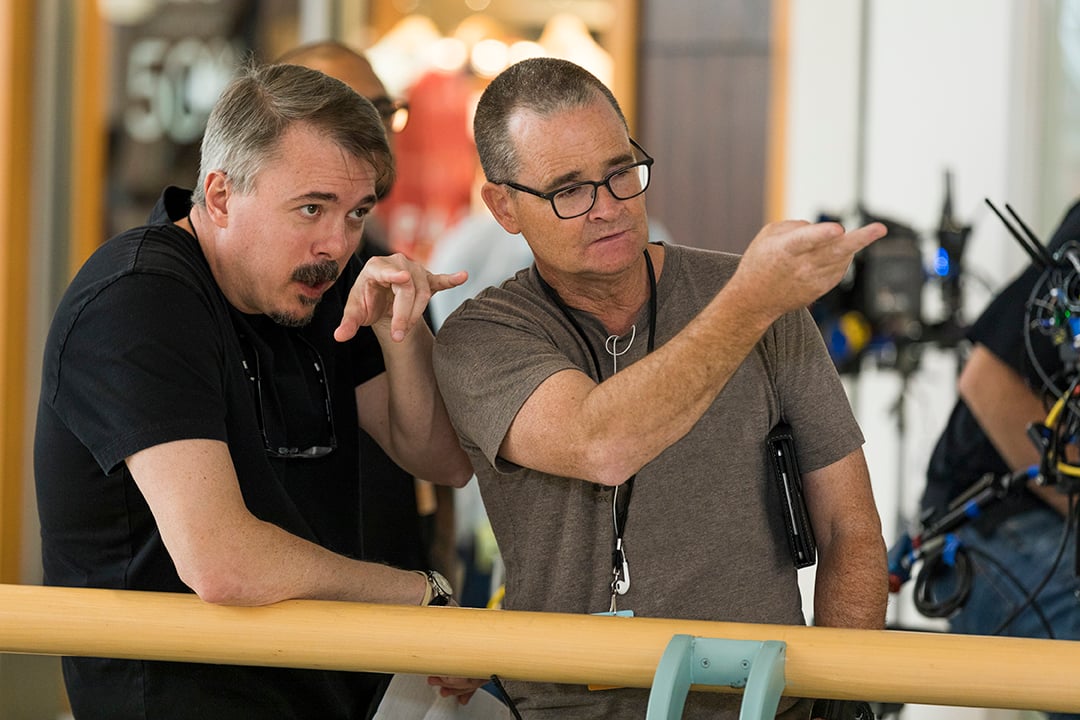
Adams suggested testing Panasonic’s VariCam 35, which has a 4K CMOS sensor that facilitates two native ISOs: 800 and 5,000. The camera had been on the market for about a year, and Adams had used it on a night exterior in the series Rush Hour. He recalls, “It was a scene that had three people talking on the edge of a cliff near Dodger Stadium, with the city lights visible off in the distance. We couldn’t position lights anywhere, so we used the VariCam at 5,000 for the wide shots. I was absolutely blown away by the images I was seeing.”
Gilligan and Gould immediately recognized the camera’s potential for Saul, which creeps into ever darker terrain as it tracks the transformation of Jimmy McGill (Bob Odenkirk) into cagey criminal-defense attorney Saul Goodman. “Having the ability to shoot at ISO 5,000 opened a whole new world for us,” says Gilligan.
“Of course,” Gould adds, “some might assume that kind of sensitivity means you don’t need to light, so everything’s going to move very quickly. But the truth is, the VariCam was another tool in the toolbox. It enabled Marshall and his wonderful crew to use a combination of our lights and the light out in the world to create a beautiful available-light look for night — a look that wasn’t like anything we’d seen before.”
Gilligan emphasizes that Adams’ artistry was as crucial to this as the camera’s extraordinary sensitivity. “At ISO 5,000, you may need less light in terms of raw candlepower, but you still have to pay just as much attention to it — and, in fact, you have to work harder to keep light off the things you don’t want light on,” he observes. “Marshall was always working with [chief lighting technician] Steve Litecky to shape the light, putting it exactly where he wanted it — no more, no less. The result looks natural but beautiful, too.”

One of the first night-exterior situations the team shot with the VariCam shows Ehrmantraut driving through the streets of Albuquerque, maintaining a discreet distance from a vehicle he is tracking with a handheld device. “Props built that device and put an LED screen inside, and all the scenes of Mike driving were lit entirely with that tracker and available light,” says Adams. “Vince was in the back seat with [A-camera operator] Paul Donachie and [A-camera 1st AC] Chris Norris, and Vince was blown away with what we were seeing out the window, even in neighborhoods that didn’t have much light.”
In a related scene, Ehrmantraut sits in his house with all the lights off, looking at the tracking device and waiting for visitors. “In that moment, that little prop was the only thing lighting Mike’s face,” Gilligan marvels. “I was so tickled seeing that on the monitor for the first time.”
In the same episode, Ehrmantraut meets a business connection in a rail yard late at night. Adams recalls, “That location had a defunct power pole, and we used that to hang a 400-watt sodium-vapor light that backlit the whole scene. Then we put a 20K and four 1K Par cans with Lee 651 gel in two scissor lifts for foreground washes. Vince asked the special-effects crew to lube the train tracks so they’d be shiny, and we tried to find an angle to capture that reflection. It worked perfectly.”
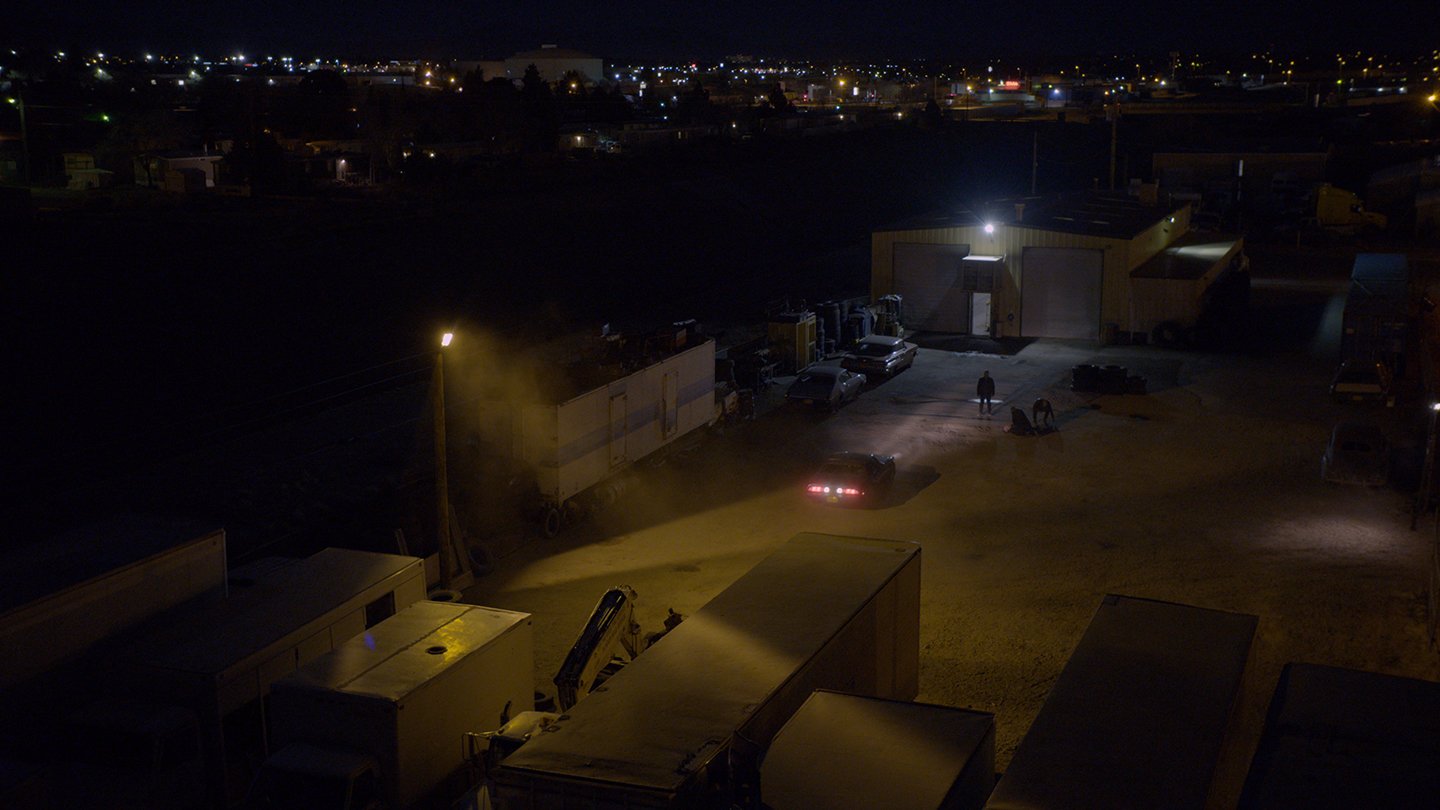
Adams notes that the rail-yard scene typifies Gilligan’s style in that it plays mostly in wide shots. “One of the first things Vince and Peter said to me when I started prepping was, ‘We know what the actors look like, and we don’t always have to see them perfectly. Make sure you’re happy with the look of some of these bigger, wider shots because we’ll use them.’ And they did. I think we did about 10 wide shots and two medium close-ups in the rail yard, and that was it.”
As Ehrmantraut pursues the other vehicle, he is led to a power plant. From there, Adams notes, “He follows a new guy who leads him to an overpass, then an abandoned booth, and finally a bridge with a drainage pipe underneath it, all for dead-drop pickups.
“We couldn’t get anywhere near the plant because it was live,” the cinematographer continues, “so during prep the electric department found a maintenance worker who was licensed to get in there, and he made sure all the bulbs were fresh — the lights in the plant were our main source.” Adams’ crew placed just a few additional lights at the location. For the final dead-drop, the cinematographer adds, “I had to take a different approach because the bridge Mike was on and the drainage pipe were so far apart. It became something really magical for me.” (See bridge lighting diagram, below.)
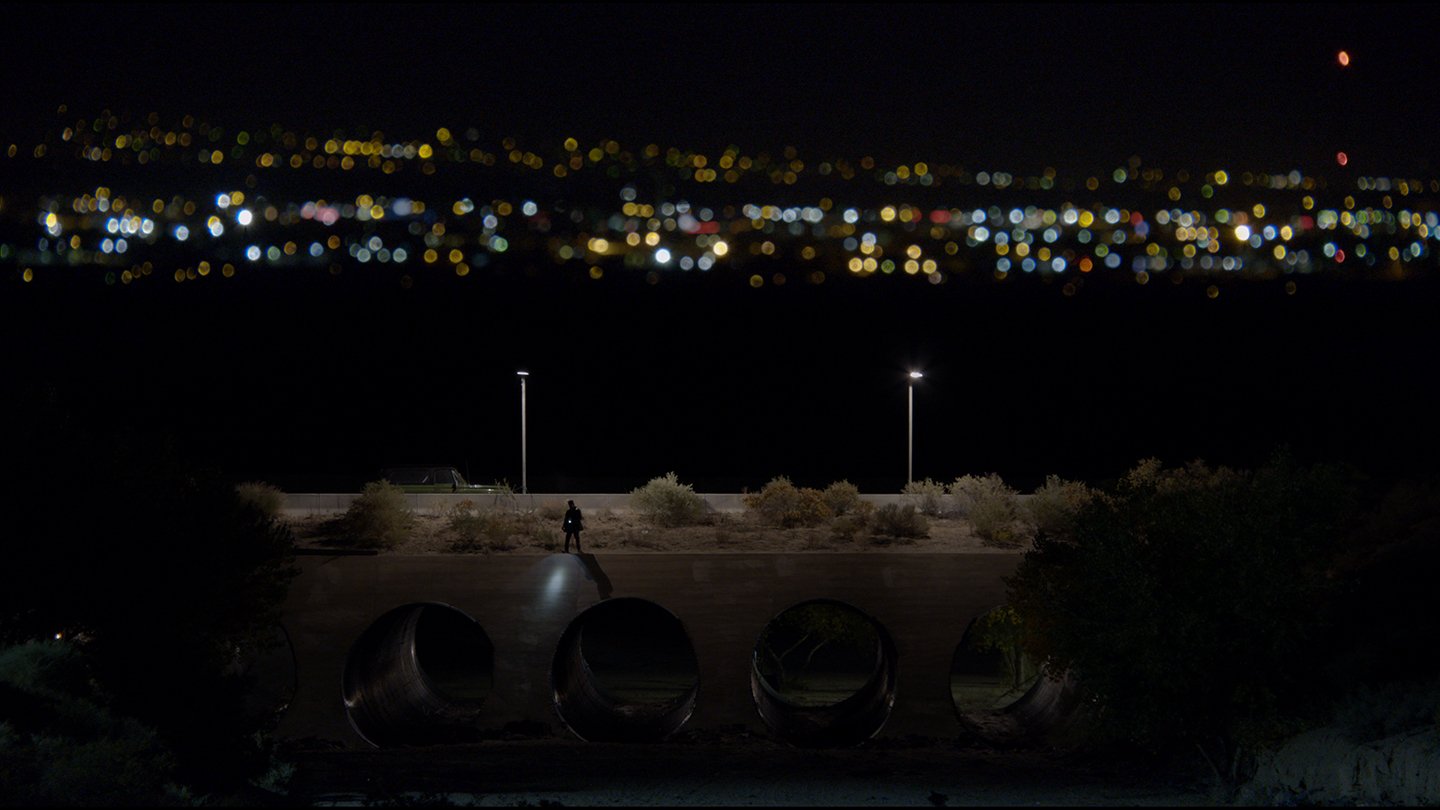
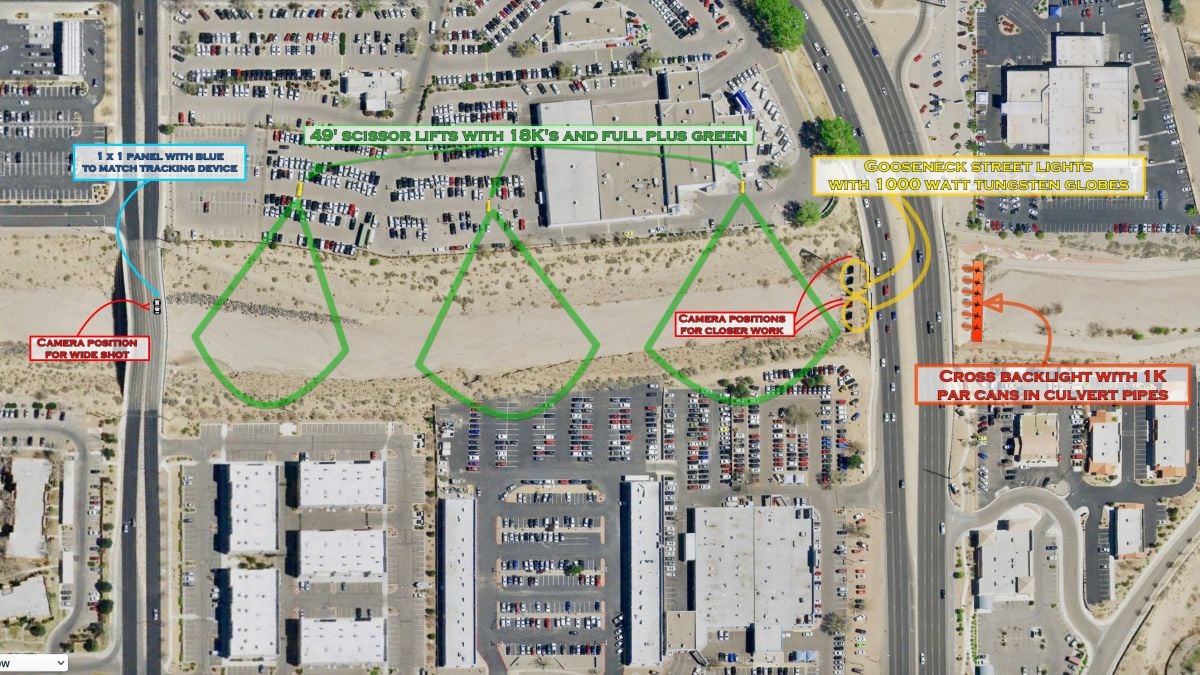
Despite the VariCam’s unique capabilities, its workflow requirements veered from Saul's established methodologies, specifically the post workflow that had been refined over the show’s first two seasons, which were shot by Arthur Albert on Red’s Epic Dragon. For this reason, production reserved the VariCam for select low-light sequences and continued with Red systems as the primary cameras.
Adams explains, “Netflix is driving this push to shoot 4K raw because they want to protect the work for future HDR and 4K broadcast, and that’s a big reason why Saul chose Red in the first place. In order to record 4K raw with the VariCam, you have to use a Codex recorder, which doesn’t compress images, so the VariCam files were six times larger than the Red files, which are captured in 5.5K at 6:1 compression. That was a challenge for the loader and a challenge in post. [Producer] Diane Mercer keeps all the episodes loaded in the SAN [Storage Area Network] so Peter and Vince can access them and make changes on the fly. They don’t work on one episode at a time; they work on a lot of them. If we’d shot exclusively with the VariCam, the files would’ve been too big [to facilitate that].
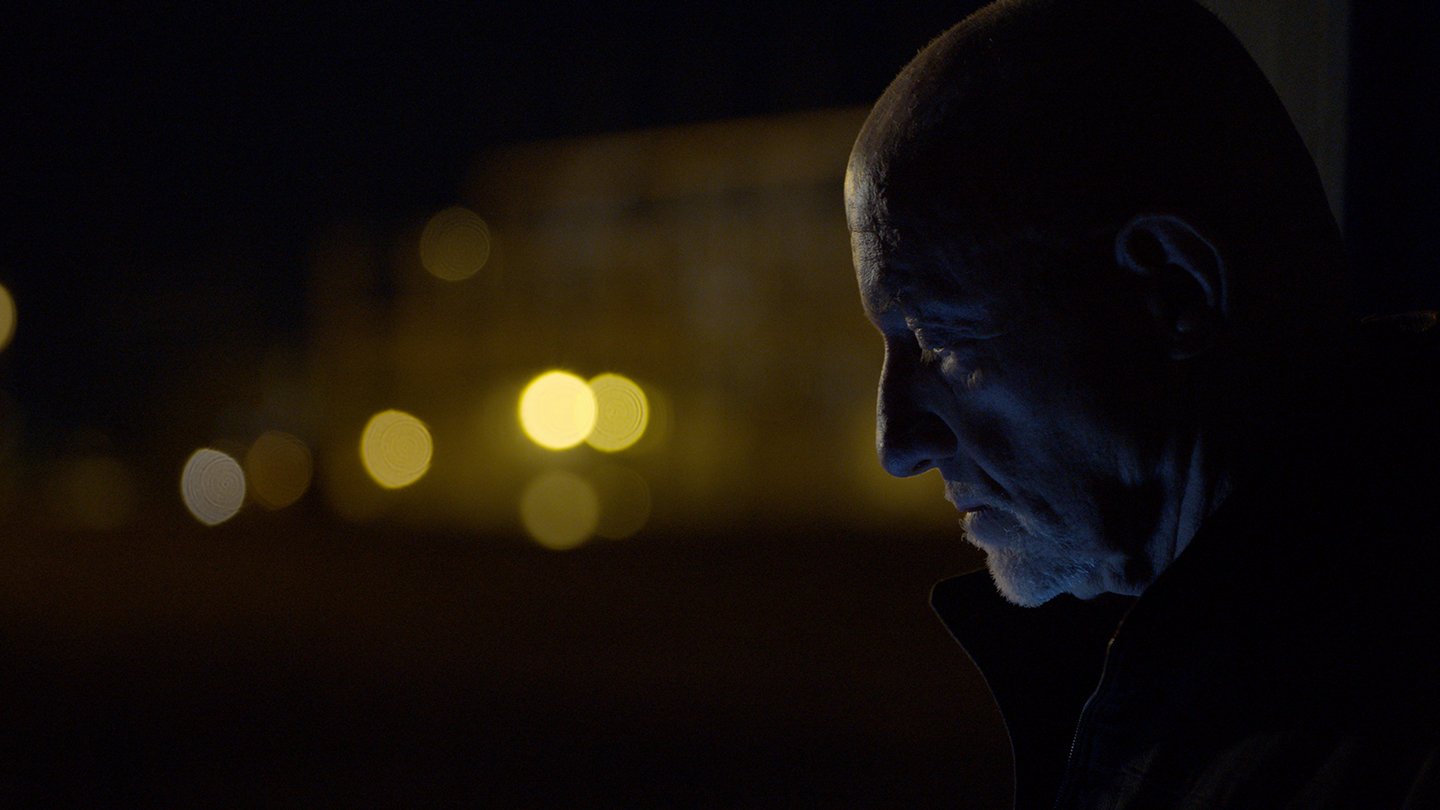
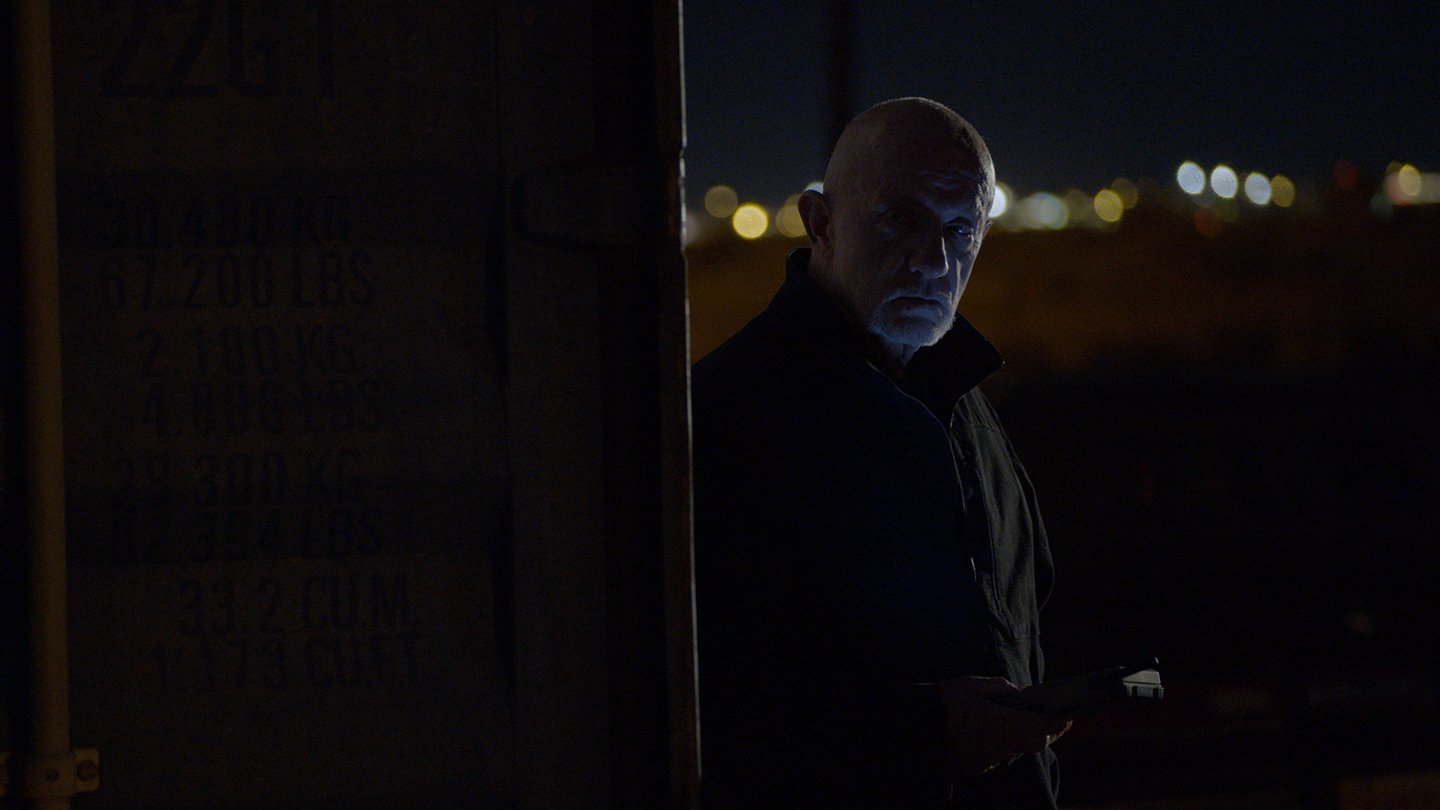
“We always had two [camera bodies] when we used the VariCam, and we used them in every episode but Episodes 3 and 4,” the cinematographer continues. “Switching camera systems in the middle of the day was a challenge, but the assistants were great at prepping them and making sure we had all the builds we needed — we shot a lot of handheld, a lot of studio, some Steadicam and a couple of Technocrane shots.” As with the first two seasons, the production also used a tiny Sony a7R II mirrorless camera for some quirky angles and extremely tight spaces — for instance, a shot of Ehrmantraut removing the air filter from under the hood of a car.
Working with Clairmont Camera in Albuquerque, Adams switched from Red’s Epic Dragon to Weapon 6K cameras after the first couple of episodes “because I occasionally saw some flare issues I didn’t care for with the [Epic] Dragon,” he explains. The production captured 5.5K-resolution files with the Weapon.
The three Angenieux Optimo zoom lenses favored in Saul’s previous seasons — 15-40mm (T2.6), 28-76mm (T2.6) and 45-120mm (T2.8) — continued to be the favorites. “They’re such beautiful pieces of glass, and they allowed us to make quick adjustments,” says the cinematographer. “We also carried an Optimo 24-290mm [T2.8] and a Clairmont variation of it, an Optimo 29-351mm [T3.5]. Because we shot the Red in 5.5K, we had to be careful about lens coverage. When we needed a little extra stop, typically for big night shots, I’d occasionally use [Arri/Zeiss] Master Primes and then bring the levels up when we moved in. The only other lens we used quite often was the Century Series 2000 Periscope [T4].”
As production commenced in Albuquerque, the VariCam presented a few different learning curves. Adams recalls, “One that quickly became apparent was that we had to be very careful about any extraneous light around us; that bit us in a couple of sets. We also realized that if we were seeing a lot of sky, we had to start with some closer shots while the sky darkened up because it took another 60 to 90 minutes to get dark enough that it didn’t look like one of those cheated 5 a.m. shots we’ve all done a thousand times [laughs]. And the crew had to figure out how to work in the dark, because the set was almost pitch black. Everyone is used to a set being brightly lit, but these were lower levels than you’d normally walk around in, even out in the world. The producers were always mindful of everyone’s safety.”
Perhaps the most significant mental adjustment for Adams was approaching night scenes with small units rather than the usual 18Ks or 20Ks. “There’s a night scene in Episode 7 that called for us to do a big drive-in on Pryce [Mark Proksch] as he pulls into his driveway, gets out and walks to the door,” he recalls. “We were going to shoot with the Red, and Steve had a big condor ordered, but then the weather forecast said we were going to have 60-mph winds. So we traded in the condor, and the generator and lights we were going to get, and went back to the drawing board to redesign the shot using the VariCam. We asked the set dressers to place some acorn-shaped diffusers on 8-foot concrete pedestals along the street; they were retrofitted by rigging gaffer Mark Mele to take 150-watt mogul-base high-pressure sodium bulbs. Four of those turned out to be enough to light a whole block of residential street. That taught us a lot. We stayed with the VariCam for most of those big night exteriors from then on.”
The camera proved equally impressive on night interiors. In one such scene in Episode 9, several men gather around a table in an abandoned warehouse to discuss how Gus Fring (Giancarlo Esposito) and Hector Salamanca (Mark Margolis) will work out their disagreements. The only source is a small lantern on the table. “Typically we would’ve had to hang lights all around that space to get an exposure, but the lantern, which was basically a 6-inch fluorescent tube, was enough, and it looked amazing,” says Adams. “Once we got into the coverage, I just shaped the light a little with pieces of tape and moved the lantern around.” Providing an almost undetectable eye light for closer work was a 1'x1' LED panel Litecky modified with a cardboard donut scrim. “When you dial that way down, it just reflects in the actor’s eyes without adding any light,” says Adams. “We used that tool a lot.”
He adds that Litecky’s contributions to Saul are invaluable. “Steve has been with the show since day one, knows it inside and out, and remembers every lighting setup he’s done. He’s actually been working with Vince and Peter since Season 3 of Breaking Bad.”
The VariCam enabled Adams to light a more intimate night interior — a scene depicting Jimmy sharing a meal with his brother, Chuck (Michael McKean), and Chuck’s wife (Ann Cusack) in the couple’s home — entirely with candles, an approach motivated by Chuck’s growing conviction that he is allergic to electricity. Gould notes wryly, “Chuck’s allergy to electricity has caused our entire camera crew a lot of pain, but it has also created some wonderful visual opportunities.” To light the scene, Adams used dozens of practical candles in-shot and another dozen on apple boxes off-camera. A 1'x1' LED panel was bounced to create fill on some of the wide shots.
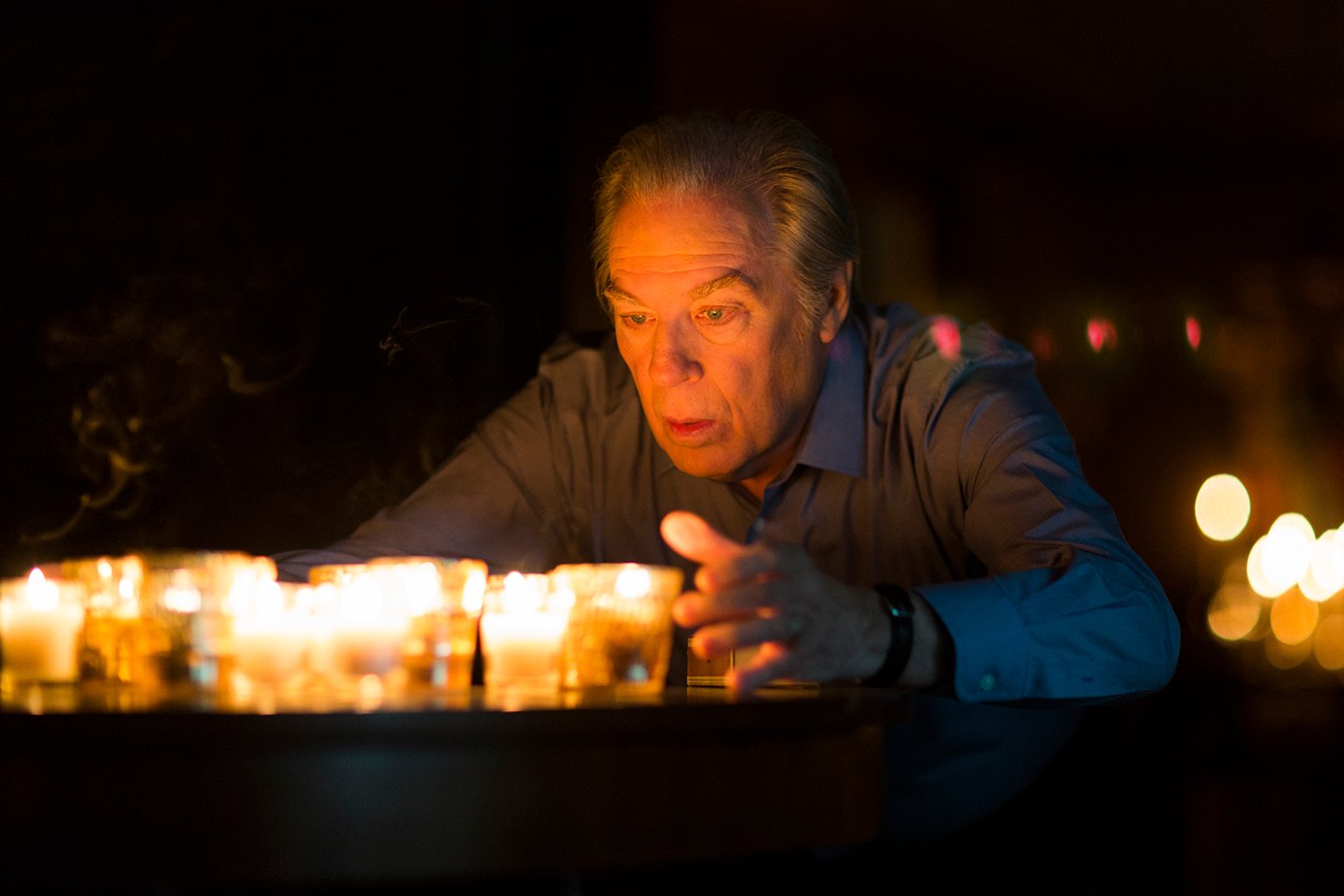
This sequence is also noteworthy for featuring a single shot captured on film, a stylistic departure motivated by Chuck’s panicked realization that his wife’s cellphone is on. “When I first met with [episode director] Dan Sackheim, I threw out a bunch of ideas for ways we could express Chuck’s horror at that moment, and one was to use a hand-cranked camera for an organic jittery effect,” says Adams. “Dan took the idea and ran with it.
“We got three rolls of film [Kodak Vision3 500T 5219] because we couldn’t bring ourselves to order less,” Adams continues, “and Clairmont sent us a hand-cranked Arri IIC. The loader and utility were terrified — they’re so young they’d never handled film! I think we shot 60 feet of film, and we pushed in on Chuck ‘like a heat-seeking missile going for its target,’ as Dan described it. Paul Donachie was operating, and [B-camera operator] Matt Credle was cranking, which is the trickiest part. To get the jitter effect we wanted, Matt mostly cranked forward, with the occasional back-crank and then forward again to create a multiple exposure. Matt had to wait until he knew the frame had changed enough or Paul had panned before cranking backwards. It turned out fantastic. It was a really good use of the right tool — a one-shot wonder.
“By that time, we’d been shooting in that set for two days with the VariCam at [ISO] 5,000, and I was just blown away by how much more light I needed for 500 ASA,” Adams adds with a laugh. “Fortunately, by that point in the scene, we’re very close on Chuck, and he has retreated into the kitchen, where there’s a fairly localized source, a practical lantern. So, we didn’t have to relight the whole shot.”
“We’re always trying to use our directors and cinematographers to progress the storytelling, to change it up, because we have a main character who is himself changing,” says Gould. “We don’t feel there’s a standard way to shoot a scene on this show — there isn’t ‘the way we do it every time’ — and pretty much every director has, in collaboration with the cinematographer, taken a slightly different approach to express what being around electricity feels like to Chuck. We’re very happy about that.”
In a night-exterior scene from Episode 6, directed by Keith Gordon, Chuck walks to downtown Albuquerque, looking for a payphone after a devastating day in court. Gould wanted a surreal level of brightness as Chuck reaches a main street that is ablaze with light, so Adams pushed the VariCam to ISO 10,000 and used existing light. In the final color correction at FotoKem’s Keep Me Posted, Gould took the look further with colorist Ted Brady.
For a night-exterior face-off set in a tow yard in the series finale, which Gould directed, the VariCam’s sensitivity required Adams’ crew to spend more time blocking light than creating it. The cinematographer explains, “We had six or seven pages there, and we were at the location three nights in a row. The owners of the lot next door had been burned by a previous production and wouldn’t turn their lights off or even talk to us. [Key grip] Aubrey Husar and his crew spent a lot of time putting up and moving large solids, three 20-by-20s — something you’d never think you’d have out on a night exterior. To light the scene, we placed a 400-watt mercury-halide practical on the front of the garage for a side-backlight, and on the other side of the lot we planted a telephone pole and put up a 1,000-watt sodium-vapor light that we panned around to shape the scene.”
Perhaps the most extraordinary use of the VariCam in the episode is a flashback to a night in Chuck and Jimmy’s childhood in rural Illinois. In a single shot, the camera, pitched over with a periscope lens, moves across 150' of ground in the boys’ backyard, finds them seated in a tent lit by a kerosene lantern, and then pushes into the tent, past the boys and directly into the lantern, finishing with a blown-out image.
“It was the most collaborative shot I’ve ever done,” says Adams. “The location had to fit the crane, the set design had to fit with our ability to move the crane, the tent had to fit the remote head with a periscope lens, the lantern had to be bright but also dimmable and safe — it was so complex, almost every person on the crew was involved in the preplanning. We mounted a Techno 50 on 75 feet of track, and that alone was unusual because typically, if you put a Techno in the right place, you don’t have to build track because it telescopes so well. Aubrey Husar really came through; he scouted the location with Peter, and he went out three hours early to set the crane. Michael Novotny, our production designer, custom-designed a period-correct [1960s] tent so we could move through it.
“Peter wanted the driving force of the scene to be the lantern inside the tent, so [for the lighting] we had to figure that out first. It was not only going to establish the levels we’d be working at, but it also had to be recognizable as we pushed into it — it’s the same type of mantle lantern Chuck uses in his home years later. The special-effects team had built an LED version of the lantern in the first season, and after we shot tests with several versions, we decided to fit the guts of that into our period lantern. It met several requirements: it looked realistic, it was small enough [1⁄2" square] to fit inside the mantle, it was bright enough but still dimmable, and it was safe to have around two children in a tent.
“By the time we got to this episode, Steve Litecky and I really had a handle on what our approach should be with the VariCam, and we’d started using some top bounces with it,” Adams continues. “Aubrey positioned a big forklift crane off to the side with a 20-by-20 wind bounce, and we aimed a 1,000-watt tungsten Par into that for a little top ambience. One of the tough things about moving across the ground that closely is that anything reflective, like water, will reveal your backlight. Also, when you’re using a periscope that way, it’s really hard to avoid flaring any kind of backlight. But with just a little top fill, you can’t really tell there’s any lighting; it’s very soft and just floats in there.”
When the time came to shoot, the team nailed it on the first take. “Peter and I just looked at each other, kind of amazed,” says Adams. “I think we did six more takes just because we’d worked so hard to get there!”
The shot is dynamic, but it also tells the story, shedding more light on the relationship at the core of Saul’s fractured heart. For Adams, this twin achievement is just one aspect of the show that sets it apart. “One of the first bits of advice Mike Slovis gave me on Breaking Bad was, ‘Don’t just find a cool shot because it’s a cool shot. Make sure it also advances the story,’” says Adams. “That philosophy drove Breaking Bad, and it drives Saul as well. It’s all about the story, and Vince and Peter strive to enable everyone to do their best work in telling that story. That’s what makes working with them so special.”
This spirit of collective creativity inspires everyone on the set. In addition to collaborating with crew who date back to Breaking Bad, such as Litecky and Husar, Adams considered it “an absolute gift” to work with Donachie, who joined Saul in Season 2. “Paul is always thinking about the story and what might best tell it visually. He finds some of the greatest shots you’ve seen in Saul — certainly in my work. Even halfway through a scene, he’d come up with an idea that was just fantastic, and we’d find a way to work it in.”
“Television is such a collaborative medium,” says Gilligan, “and when you surround yourself with the best people, allow them the freedom to offer their opinions and then listen to them, more often than not you wind up with a better show. We and the writers work so hard on these scripts, and we’ve got a vision for the show in our mind’s eye that we want to translate to the screen as pristinely as possible. To that end, our scripts are very, very detailed — there is probably more scene direction than there is dialogue in an average script — but we always give the cinematographer and our other collaborators ample opportunity to weigh in and make a sequence better. And, of course, when they weigh in, they do make the show better.
“That’s certainly the case with Marshall,” Gilligan continues. “He’s collaborative, yet he always has an opinion. He won’t force it on you, but he’s ready and willing to give it unvarnished when you need to hear it — and quite often, you do need to hear it as a director! He not only made my work look better than I hoped it could look, he also made my job easier by working so fast and being so communicative. He was nothing but value added to our series.”





